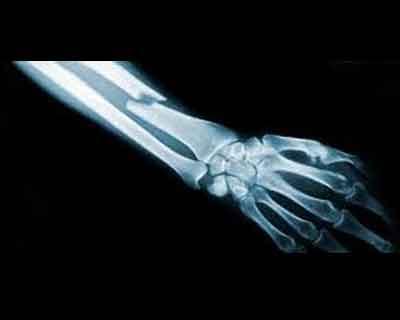- Home
- Editorial
- News
- Practice Guidelines
- Anesthesiology Guidelines
- Cancer Guidelines
- Cardiac Sciences Guidelines
- Critical Care Guidelines
- Dentistry Guidelines
- Dermatology Guidelines
- Diabetes and Endo Guidelines
- Diagnostics Guidelines
- ENT Guidelines
- Featured Practice Guidelines
- Gastroenterology Guidelines
- Geriatrics Guidelines
- Medicine Guidelines
- Nephrology Guidelines
- Neurosciences Guidelines
- Obs and Gynae Guidelines
- Ophthalmology Guidelines
- Orthopaedics Guidelines
- Paediatrics Guidelines
- Psychiatry Guidelines
- Pulmonology Guidelines
- Radiology Guidelines
- Surgery Guidelines
- Urology Guidelines
Point of Care Ultrasound Versus X-ray: Whats better for Children

Point of Care Ultrasound (POCUS) assessment of distal forearm injuries in children is accurate, timely, and associated with low levels of pain and high caregiver satisfaction. That is the main finding of a study to be published in the March 2017 issue of Academic Emergency Medicine (AEM), a journal of the Society for Academic Emergency Medicine.
The lead author is Naveen Poonai, MD, MSc MD FRCPC, associate professor paediatrics and internal Medicine, Schulich School of Medicine & Dentistry at Western University. Dr. Poonai is internationally recognized for his work in the assessment and management of acute pain in children and the role of POCUS in paediatric emergency medicine.
There are many goals when managing children with suspected fractures of the arm. These include being fast and accurate in the diagnosis, not causing more pain and limiting exposure to radiation. Achieving these goals can result in high rates of caregiver satisfaction. Dr. Poonai's study suggests that POCUS may be a viable alternative to x-ray with respect to diagnostic accuracy, cost effectiveness, pain, caregiver satisfaction, and procedure duration.
Dr. Poonai: "We conducted a cross-sectional study involving children age 4-17 years with a suspected non-angulated distal forearm fractures. Our objective was to explore the test performance characteristics and patient-oriented outcomes of POCUS compared to x-ray. There were 76 fractures among 169 children. POCUS was found to have a sensitivity of 94.7% and a specificity of 93.5%. POCUS was also associated with high caregiver satisfaction and a significantly lower pain score and procedure duration compared to x-ray. Our findings suggest that POCUS is an accurate tool to diagnose distal forearm fractures in children that is associated with high caregiver satisfaction and low levels of pain."

Disclaimer: This site is primarily intended for healthcare professionals. Any content/information on this website does not replace the advice of medical and/or health professionals and should not be construed as medical/diagnostic advice/endorsement or prescription. Use of this site is subject to our terms of use, privacy policy, advertisement policy. © 2020 Minerva Medical Treatment Pvt Ltd